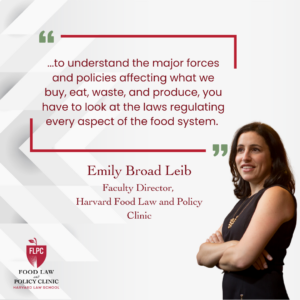Originally written by Clare Toeniskoetter and published on The New York Times on Sept. 20, 2022.
Several companies say they are tackling food waste by connecting people with unsold food from restaurants and grocery stores.
Every Sunday at 2 p.m., Marisela Godinez, the owner of El Mesón Tequilería, a Mexican restaurant in Austin, Texas, used to fill a 12-gallon bucket, plus another half-bucket, with leftover food from the restaurant’s all-you-can-eat brunch buffet. “We threw out a lot of food,” she said.
But a few months ago Ms. Godinez signed up to use an app called Too Good To Go. Now, 10 customers pick up “surprise bags” of her leftovers for $5.99 each, and she sends far fewer scraps to the landfill or compost.
Around the country, apps that connect customers to businesses with leftover food have begun to spread. The concept is simple: Restaurants and grocery stores throw away huge amounts of food every day. Rather than trash it, apps like Too Good To Go and Flashfood help businesses sell it at a reduced price. They claim that the businesses and buyers are helping the environment because the food would otherwise become food waste, a big contributor to climate change.
The apps, which make money by taking a portion of each sale, promote themselves with language that sounds more like a call to arms than a grocery list. “Fight against food waste,” reads the Flashfood description. The Too Good To Go promo calls users “food waste warriors.”
Similar apps are popping up around the world. In Singapore, treatsure started selling leftovers from hotel buffets and recently began partnering with supermarkets. In Hong Kong, Phenix sells from bakeries, coffee shops and grab-and-go restaurants. Tabete follows a similar model in Japan.
Food production itself is a major contributor to greenhouse gas emissions, accounting for between a quarter and a third of global emissions. Each step of the process — growing, harvesting, moving, processing, packaging, storing and preparing food — releases carbon dioxide, methane and other planet-warming gases. When the food is wasted, so are all those emissions.
In addition, once unused food reaches landfills, it decomposes and releases more methane.
“We waste 35 to 40 percent of the food we produce,” said Emily Broad Leib, the director of the Harvard Food Law and Policy Clinic. A lot of it is perfectly edible, but it can be costly for businesses to store, transport and donate or sell. “To the extent that all of these apps make it easier for businesses, I think that they’re net positive,” she said.
Launched in Toronto about a half-decade ago, Flashfood now works with more than 1,400 supermarkets in the United States and Canada (although that remains only a small fraction of the tens of thousands of grocery stores overall) including large chains like Meijer, Giant and SpartanNash stores. It recently entered the New York City market at a Stop & Shop store in the Bronx. When food is nearing its expiration date, rather than throwing it out, retailers can scan products into the Flashfood system to be sold at about half price. Customers can browse the items through the app, purchase them and pick them up at a local store. Flashfood takes a 25 percent cut.
In Hammond, Ind., Jerry Wash, a retired railroad ticket agent, said he regularly looked to see what’s available at his local Meijer. “We wake up in the morning, you know, most people are checking their social media,” he said. “We’re checking Flashfood.”
Mr. Wash said he and his wife, Jody, didn’t shop at the regular clearance sections of grocery stores, describing sale food as “bruised” and “bad.” More recently, he said, they’ve been planning meals around what’s available on the app.
Josh Domingues, the company’s founder and chief executive, acknowledged that he had recreated the clearance rack on people’s phones, but he said the presentation was key. “This food is not segregated in the back corner, that, like, almost makes you feel smaller for going to pick through,” he said. Instead, blue, branded fridges sit in the front of grocery stores with signs encouraging people to help fight food waste.
Too Good To Go has tried to gamify buying leftover food. In the United States, customers in 12 cities can browse restaurants and stores, then reserve “surprise bags” that typically cost about $4 to $6 and contain food that would have been originally priced at roughly three times that amount. The bags can be picked up at a certain time window. Too Good To Go takes $1.79 per bag and charges partners an annual fee of $89.
Jennifer Rexrode, a tax analyst in Austin, heard about the app in May. “A friend of mine posted a picture of their food that they got from Too Good To Go from a local barbecue restaurant where they got a bunch of ribs,” she said. “And I’m like, I want a bunch of ribs! And so, I signed up.”
She says the surprise element makes it feel like adult trick-or-treating. Highlights from the 76 bags she’s ordered include: Seven soggy tacos and a chicken sandwich that she crisped up in her air fryer ($3.99), two dozen extra large sausage kolaches she shared with her mechanic ($5.99) and seven separate orders of cupcakes, cinnamon rolls, cookies, croissants, pie and falafel ($3.99 to $4.99 each) that she picked up back-to-back on her birthday.
“Consumers actually really enjoy it,” said Jamie Crummie, the company’s co-founder. Some users post videos of their hauls on TikTok, and there’s a Reddit community of over 10,000 people sharing photos of bags.
Others take to Facebook to share their surprises. Kate Mytron in Portland posted a photo of four slices of pizza with the caption “Not the best pizza, but well worth the $5.” In New York City, Joel St. Germain put up photos of a bag of rotten produce. “There was nothing usable in it,” he said. “It all went in the garbage, a hundred percent.”
Mr. St. Germain said he had recently cut down on using the app, but not because of occasional bad orders. It’s just that he was gaining weight from eating too much pizza and pastries.
Too Good To Go is more popular in Europe, where it operates in 15 countries and has partnerships with international chains including Starbucks, Pret A Manger and Costa Coffee. In the United States, the company said it was continuing to expand and is currently piloting partnerships with Safeway and Panera.
Several food waste experts expressed optimism that these types of apps could help limit the amount of food sent to landfills. And even though charitable organizations often redirect unwanted food from restaurants and grocery stores to food banks and community kitchens, “there’s space for all of these kinds of solutions to coexist,” said Lorenzo Macaluso, the chief growth officer at the Center for EcoTechnology, a nonprofit group that focuses on the issue. “Unfortunately, there’s way too much food waste out there.”
Mr. Macaluso pointed out that these apps are geared toward selling small volumes of perishable goods, whereas food banks are usually set up to handle much larger donations. “So those kinds of apps are filling a really interesting and unique niche,” he said.
The apps also have the potential to reach people facing food insecurity. Flashfood said a minority of its shoppers (roughly one in five) experience food insecurity, according to its own survey data, and the company is working to allow government assistance cards as payment methods. A spokeswoman for Too Good To Go said the company did not accept food stamps and did not have similar data on users.
One complication is that, according to interviews with several companies selling on Too Good To Go, at least a few items for sale there aren’t necessarily what buyers might think of as “food waste.” The owner of a Baltimore dessert shop said she considered the app a promotional tool to reach new customers by selling what she called “little samples.” A beverage company owner said he used the app to sell discontinued products, but also sold new flavors there in hopes of attracting new customers.
Mr. Crummie, the Too Good To Go director, said the app’s requisite price point dissuaded this type of behavior. “If somebody is paying $5, they should be receiving $15 worth of food,” he said. “So it’s not a profit-generating platform.” He added that the company responded to user reviews, and when businesses are misusing the platform, it ends the partnership.
Regardless, Professor Broad Leib said she thought these apps would make users reconsider their own food waste, and that would be beneficial. “The best ways to change consumer behavior has been just making people more aware of the issues,” she said.
Ms. Rexrode, the tax analyst in Austin who uses Too Good To Go, has thought about the effect she’s having on the climate. The app includes details on how many pounds of carbon dioxide she has “saved” based on the number of surprise bags she has bought, which in her case is 419 pounds.
However, she pointed out, that number might not be entirely accurate. “They don’t know how much I’ve contributed by going to get the food,” Ms. Rexrode said. “I am driving!”


Health Law & Policy, Commentary
Braidwood Management v. Becerra: Updated FAQs for Health Advocates and Providers
July 22, 2024